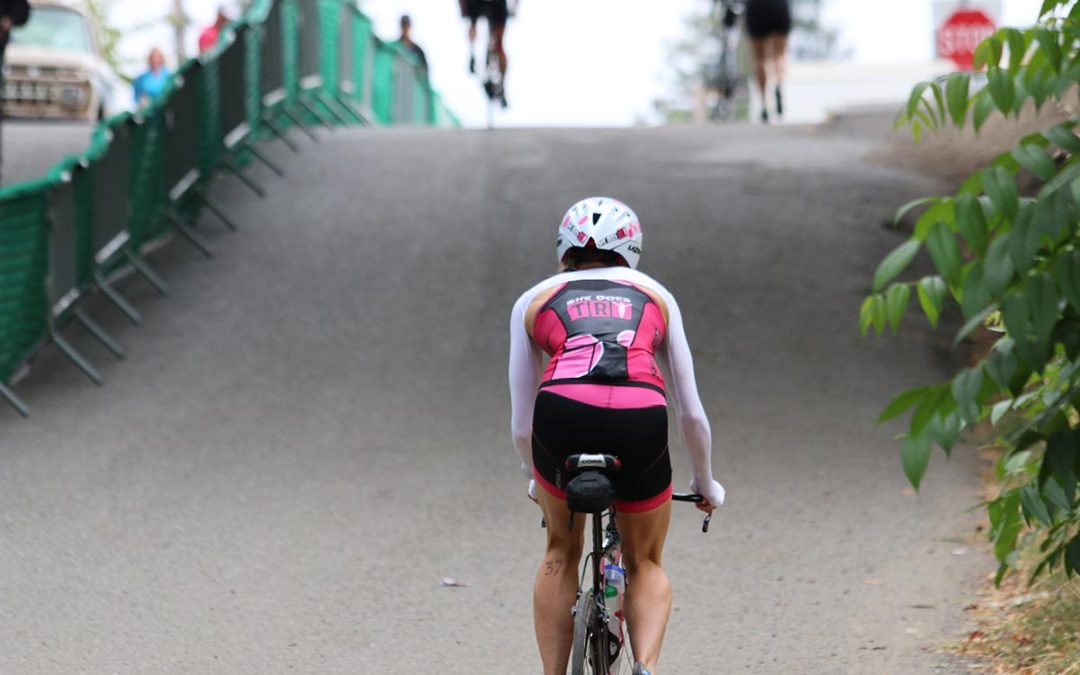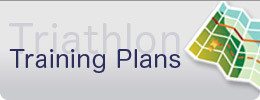Thinking about whether or not to sign up for a triathlon with a hilly bike course? Or, maybe you’ve already signed up and are wondering how you’ll training for a hill course when your training terrain is flat.
Many athletes avoid races with hilly bike courses. Reasons include:
- “I want to set a personal best time.” Of course, a flat course will be faster than a hilly course. However, if you are trying to qualify for a championship race like Kona, you may have a better chance on a hilly triathlon if you are a stronger climber than the other athletes in your age-group. The key is to prepare for the hills ahead of time.
- “A hilly course will be so much harder.” This is true. You will have a slower bike split and you will have to put a lot of effort out on the hills. However, the downhills will also give you a chance to rest your legs. Plus, conquering hills can mentally break up a race into smaller chunks allowing you to set mini goals throughout the bike.
- “I live where there are no hills, so I can’t train for a hilly course.” You may live in flat, coastal Florida but that doesn’t mean that you can’t be become better at climbing hills. There are plenty of ways that can help prepare you for climbing hills, even if you are training on the flats.
There are both advantages and disadvantages to racing hilly courses. If you prepare for the hills in training, you can set yourself up for a fantastic race.
If You’re Training for a Hilly Bike Course…
Train on hills. If you live in a location where you have access to hills, climb at least once per week to build strength and confidence in climbing as well as confidence in descending. Expect your cadence and average speed to slow down as the hill gradient increases and you run out of gears. If the downhills are steeper than you are comfortable descending on your triathlon bike, train on a road bike during those workouts.
While climbing alternate between both seated and standing. A good tactic is to alternate standing and sitting every 1 minute. This has the added advantage of allowing you to stand up and stretch, which will be a nice relief from riding bent over in aero position.
If you have lots of options for types of hills (long, gradual to short, steep), train on a variety of them with an emphasis on training on “like” hills for the course you’ll be racing. Train at a variety of intensities, too, to get a feel for what you can sustain and recover from. In general, the longer the race, the less average intensity you’ll be able to maintain for a given effort without impacting yourself later on the bike or on the run.
What If Your Highest “Mountain” is a Freeway Overpass?
To mimic hill climbing on flat roads, shift into a big gear (big chain ring in the front and small chain ring in the back) and practice sustained on straight stretches of flat road to produce power with high torque and a low cadence of 60-75 rpms. Do hill repeats on overpasses riding up one side and down the other before turning around and repeating multiple times.
Set a challenging power or heart rate goal for a specified time or distance and keep the pressure on until you reach the end. Instead of being frustrated with a strong headwind, use the headwind as an opportunity to do a hard, sustained effort into the wind to simulate the resistance of a long, uphill climb. You can also use a trainer on indoor bike that allows you to increase resistance to simulate hill climbing.
Keep Your Effort in Check During Training and Races
Pacing is challenging, especially on long, hilly courses that require more varying speeds and power outputs. Practice pacing on any terrain. If you attack each climb in a race, you will quickly tire out your legs and your legs will hate you later during the run. Are you able to maintain a consistent effort (output) throughout your ride or do you fade in the second half as compared to the first? If you’re finding yourself frequently fading, purposefully ride the first half at an easier effort than normal with the goal to finish the second half stronger.
Practice short BRICK runs after your long rides. Are you able to quickly transition to running at your goal race pace?
Climbing Power is Not the Same as Flatland Power
If you chose to climb hills, recognize that your average speed and average power will vary more than if you were to ride on a flat road for hours on end. Uphills will boost your average power but drop your average speed during the climb. Similarly, downhills will increase your average speed but you won’t be pushing as hard so the watts will decrease.Your normalized power for the ride may higher than if you just rode the flats. When you train or race on hills, pay more attention to your heart-rate, how you feel and current power or speed rather than the averages. You don’t want to be mentally defeated in the middle of a race simply based on what readings show up on your bike computer. If it helps, cover your speed reading while climbing.
There are advantages to racing in a hilly triathlon, especially if you’re prepared for the hills. So instead of avoiding hilly triathlon courses, test one out and see how you like it.
As one of our fellow coaches likes to say, “Take the hill, kill the hill!”
To learn more about cadence or training indoors on a trainer, check out School of Tri’s Tips for Training on the Bike.
Good luck!
Krista
—
 Multiple IRONMAN Triathlon finisher and overall female winner of the Galesburg Half Marathon, Coach Krista Schultz has literally helped thousands of endurance athletes and non-athletes achieve their success through coaching, consulting, clinics, seminars and performance testing. She has written articles for magazines like Triathlete Magazine and Runner’s World and is the founder of She Does Tri for Women, which focuses on helping females achieve confidence through health and fitness.
Multiple IRONMAN Triathlon finisher and overall female winner of the Galesburg Half Marathon, Coach Krista Schultz has literally helped thousands of endurance athletes and non-athletes achieve their success through coaching, consulting, clinics, seminars and performance testing. She has written articles for magazines like Triathlete Magazine and Runner’s World and is the founder of She Does Tri for Women, which focuses on helping females achieve confidence through health and fitness.


